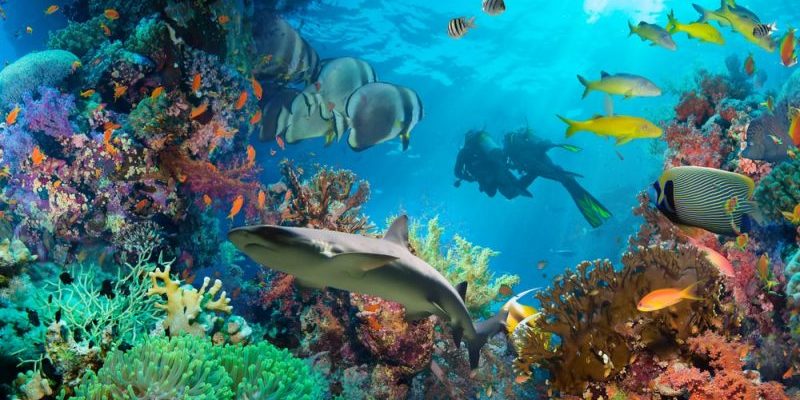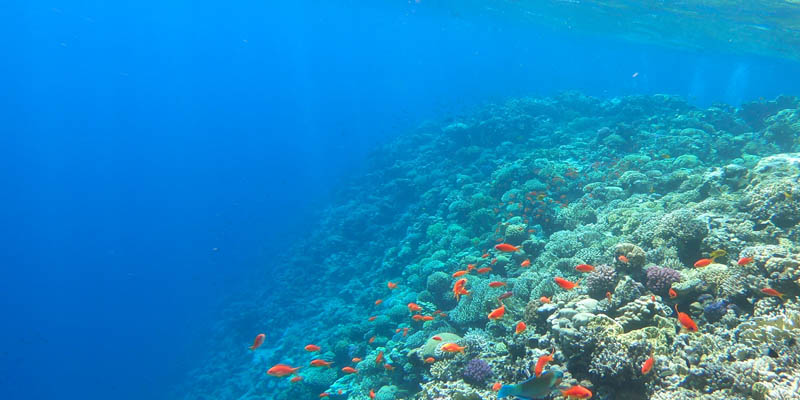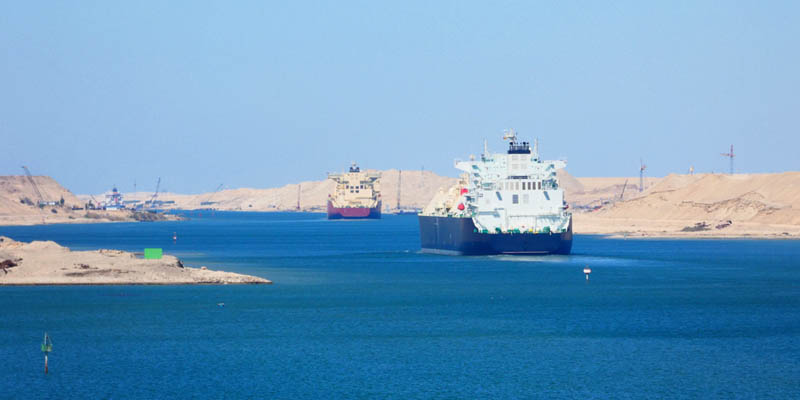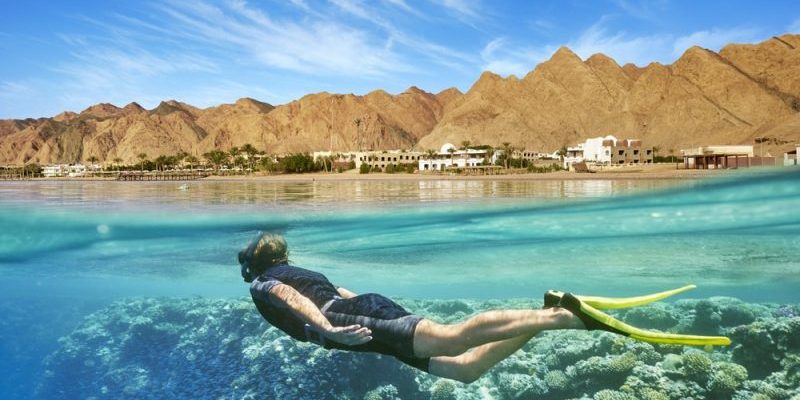We explore the Red Sea, and describe its physical characteristics and rich biodiversity. In addition, we discuss its geological formation and economic importance.

What is the Red Sea?
The Red Sea is a saltwater body located between Africa and the Arabian Peninsula. It is bounded to the north by the Sinai Peninsula, the Gulf of Aqaba, and the Gulf of Suez, and to the south by the Gulf of Aden. The bordering countries are Egypt, Saudi Arabia, Sudan, Yemen, Eritrea, Israel, Djibouti, and Jordan.
It has a surface area of 170,000 sq mi (440,000 km2), with a length of over 1,242 miles (2,000 km) and a maximum width of 221 miles (355 km), giving it a long, narrow shape. Its average depth is 1,608 feet (490 m).
The Red Sea boasts a rich biodiversity, being home to thousands of plant and animal species, including some that are unique in the world.
How did the Red Sea get its name? The origin of the name is unknown, since its waters are not red in color. One hypothesis proposes that the ancient Egyptians referred to this sea as the "Sea of the Himyarites" after a local tribe known for dyeing their clothes and bodies with red tints.
On the other hand, it is believed that the name “Red Sea” might have stemmed from a translation error of the Hebrew term Yam Suph, which means "Sea of Reeds". The similarity between the spellings "reed" and “red” in English might account for the mistake.
- See also: Dead Sea
How was the Red Sea formed?
The main hypothesis for the geological origin of the Red Sea suggests that it began to form around 30 to 55 million years ago, when the African Plate split from the Arabian Plate. The space between the plates filled with water, giving rise to the Red Sea. The separation of the plates also created a rift in the crust known as the “Red Sea Rift”, and a chain of volcanoes that lies submerged under its waters.
The movements and interactions between the African and Arabian plates generate tensions that can cause earthquakes. Volcanic activity in the region has also contributed to the formation and geological evolution of the Red Sea, as well as to the creation of some of its islands. Volcanic eruptions are frequent, especially in the Dahlak Archipelago and the Zubair Islands.
Physical features of the Red Sea
The Red Sea exchanges its water only with the Mediterranean Sea and the Indian Ocean. Unlike most seas, no rivers or streams flow into it.
The salinity of the Red Sea is very high, averaging about 40%. This is due to high evaporation caused by the region’s hot climate, the lack of rainfall owing to extremely dry weather, and the absence of freshwater rivers flowing into it.
The Red Sea is one of the warmest seas in the world, with temperatures ranging between 79 °F and 86 °F (26 °C and 30 °C) in summer, and 72 °F and 82 °F (22°C and 28 °C) in winter.
Biodiversity of the Red Sea

In addition to corals, the Red Sea boasts a wide variety of flora and fauna. It is home to 1,200 species of fish, including the whitetip shark and the lionfish.
Likewise, mollusks and other vertebrates such as giant clams and rays are present. Among the reptiles, various species of turtles stand out, such as the leatherback and the hawksbill.
The seabed is covered with algae, grass, and seagrass meadows where the various animal species find abundant food.
Coral reefs

The Red Sea is known for being a rich and diverse marine habitat, exhibiting an immense variety of fish, invertebrate and coral species. The combination of the warm water temperature and high salinity of the Red Sea makes it an ideal environment for marine life.
Marine corals are colonial animals that settle in tropical and subtropical waters forming reefs, that is, structures made from the calcium carbonate secreted by these animals. Coral reefs form in shallow waters where sunlight can penetrate, allowing photosynthesis by algae inhabiting the corals. Algae provide food and energy to corals and contribute to reef building.
The Red Sea’s coral reefs are considered among the most spectacular and best-preserved in the world.
Coastal countries and cities

The main cities located on the shores of the Red Sea are:
| Country | Main coastal cities on the Red Sea |
|---|---|
| Egypt | Hurghada Safaga Sharm El Sheikh |
| Eritrea | Assab Massawa |
| Sudan | Port Sudan Suakin |
| Yemen | Al Hudaydah |
| Israel | Eilat |
| Jordan | Aqaba |
| Saudi Arabia | Jeddah Yanbu |
| Djibouti | Moulhoule |
The Suez Canal

The Suez Canal is an artificial waterway built between 1859 and 1869 to connect the Red Sea with the Mediterranean Sea. Before its construction, the Red Sea was only connected to the Indian Ocean through the Bab-el-Mandeb Strait and the Gulf of Aden.
The Suez Canal is 101 miles (163 km) long, and connects Port Said on the Mediterranean coast with Suez on the Red Sea coast.
It was built to provide a shorter shipping lane between Europe and Asia, as ships previously had to sail around the entire African continent. Its construction had a significant impact on world maritime trade, making the transportation of goods faster, more efficient, and safer.
Tourism in the Red Sea

Tourism in the Red Sea is very popular due to the beauty of its beaches and the large amount of marine life that can be found.
Among the main tourist attractions are white sand beaches, coral reefs, and the impressive and unique sea life. Approximately 10% of the marine species found in the Red Sea are endemic, meaning they do not occur anywhere else in the world.
The main tourist destinations on the Red Sea are Egypt, Israel, Jordan, and Saudi Arabia. These countries have developed tourist infrastructure to attract visitors and offer a wide variety of services, from luxury hotels to souvenir shops and restaurants.
Tourists can engage in numerous water activities such as scuba diving, snorkeling, windsurfing, recreational fishing, and boat tours.
Biblical story about the Red Sea
The biblical story of the Red Sea is recounted in the book of Exodus. According to the account, the people of Israel had been enslaved in Egypt, and Moses was sent by God to liberate them. After ten plagues, the Pharaoh of Egypt finally allowed the Israelites to leave for the Promised Land.
As the Israelites traveled eastward, the pharaoh betrayed them, sending his armies to pursue them. The Israelites found themselves trapped between the Egyptian soldiers and the Red Sea. According to the biblical account, Moses parted the sea to allow the Israelites to cross, with walls of water on both sides. The Egyptian soldiers followed them, but the waters engulfed them, and they drowned.
Explore next:
References
- Cinco Días (s.f). Aqaba, donde el desierto se convierte en mar. https://cincodias.elpais.com/
- Figueras, A. (2010). Moisés y el mar Rojo. ¿Ciencia y religión?. Ciencia marina y otros asuntos. https://www.madrimasd.org/
- Vidal, M (2022). Los corales del mar Rojo, una esperanza para otros arrecifes. https://www.dw.com/
- ZOEA (s.f). El mar Rojo. https://biologiamarina.info/
Was this information useful to you?
Yes NoThank you for visiting us :)